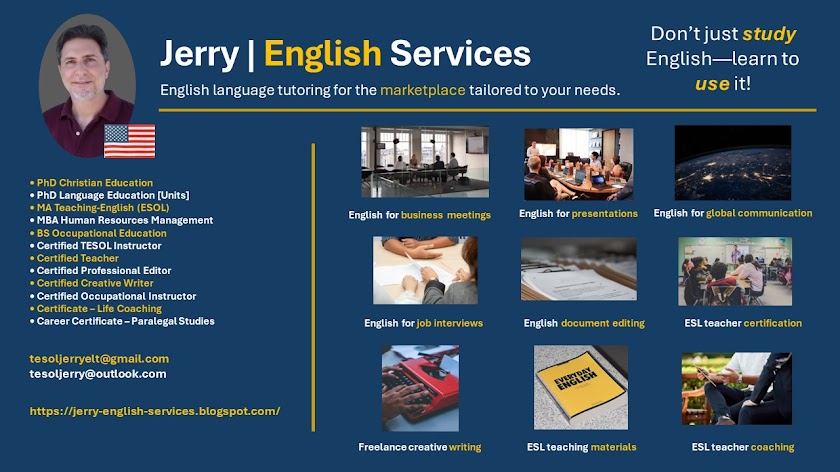Business English learners can be critical and have high expectations of their teachers. In addition, they can sometimes be hurried (in class) because of deadlines or meetings. They’ll likely expect professionalism from their teachers—and why not: these learners are professionals.
1. Be Professional
Treat business English learners with respect and courtesy. You can model it in your interactions with them during class. You’ll also want to teach them as adults with purposes as if their goals are your goals for them. Be professional, and everything else will fall in line.
2. Be Focused
Focus lessons on one point of the language, on the language they need, on the environments they encounter, and on helping them improve weak areas.
3. Have a Purpose
Find out what your business English students need and give it to them. Assess them and make suggestions. Ask them what they want from their classes and deliver it. Observe them and offer feedback.
4. Keep Things Interesting and Relevant
They may not care about the latest TV show or pop songs. But they’ll likely be interested in talking about the latest trends in their business field. They may also be uninterested in talking about home life though personal interests may come up. Discover how to keep things real for them and use it toward their goals.
You’ll want to bring them into the situations they encounter. Begin with a general sample of a setting they may be exposed to that includes fixed content and dialogue. For business or marketplace English clients that could be anything like job interviews, meetings, presentations, socializing, negotiating, and the like. The idea here is to warm them up to the language they’ll be using.
5. Help Them See Their Improvements
Business people are used to seeing results, so they look for results. They need to measure progress and know their investments are paying off. If they can see their improvements, you will likely make long-term and or satisfied customers. Simply telling them what they used to do and how it’s better now is a good place to start.
Final Thoughts
Remember, with business people, understanding them is the key to teaching them. If you know more about them, your lessons will be focused; they’ll have a purpose. Your lessons will be relevant and match them. Your speech will be courteous and model appropriate business language. Plus, your class members will feel as if they learned something. In the end, you’ll have satisfied clients.
END
__________
Author: Jerry S. [Updated from a previously written article.]
Author bio: Jerry is a marketplace English language trainer of 21 years and Senior TESOL Certificate Instructor affiliated with Midwest Education Group, with a wide range of experience and education ranging from bachelor to doctorate degrees in various fields, who writes articles, blogs, ESL e-learning materials, academic papers, and more.
Photo by Adeolu Eletu on Unsplash






